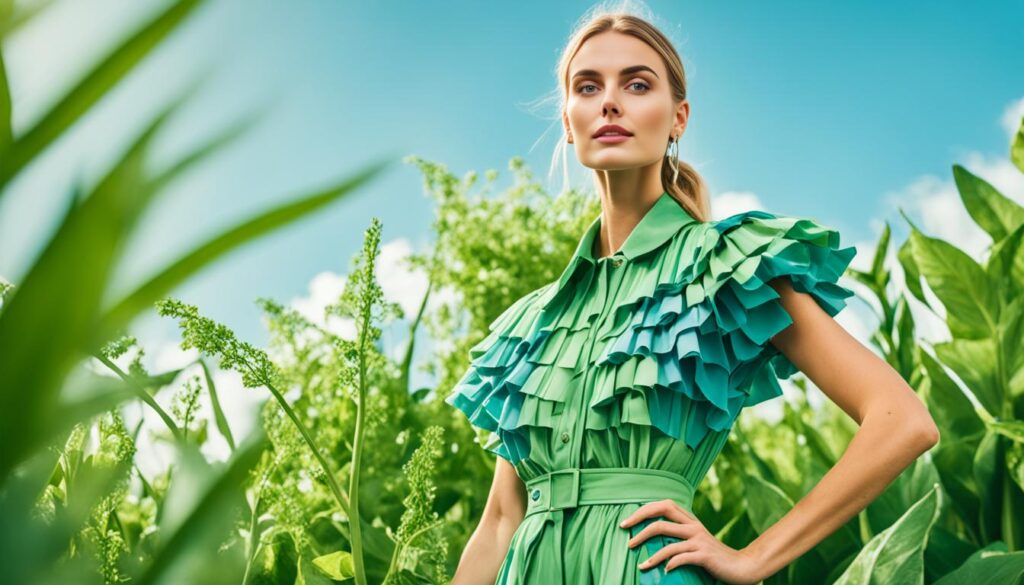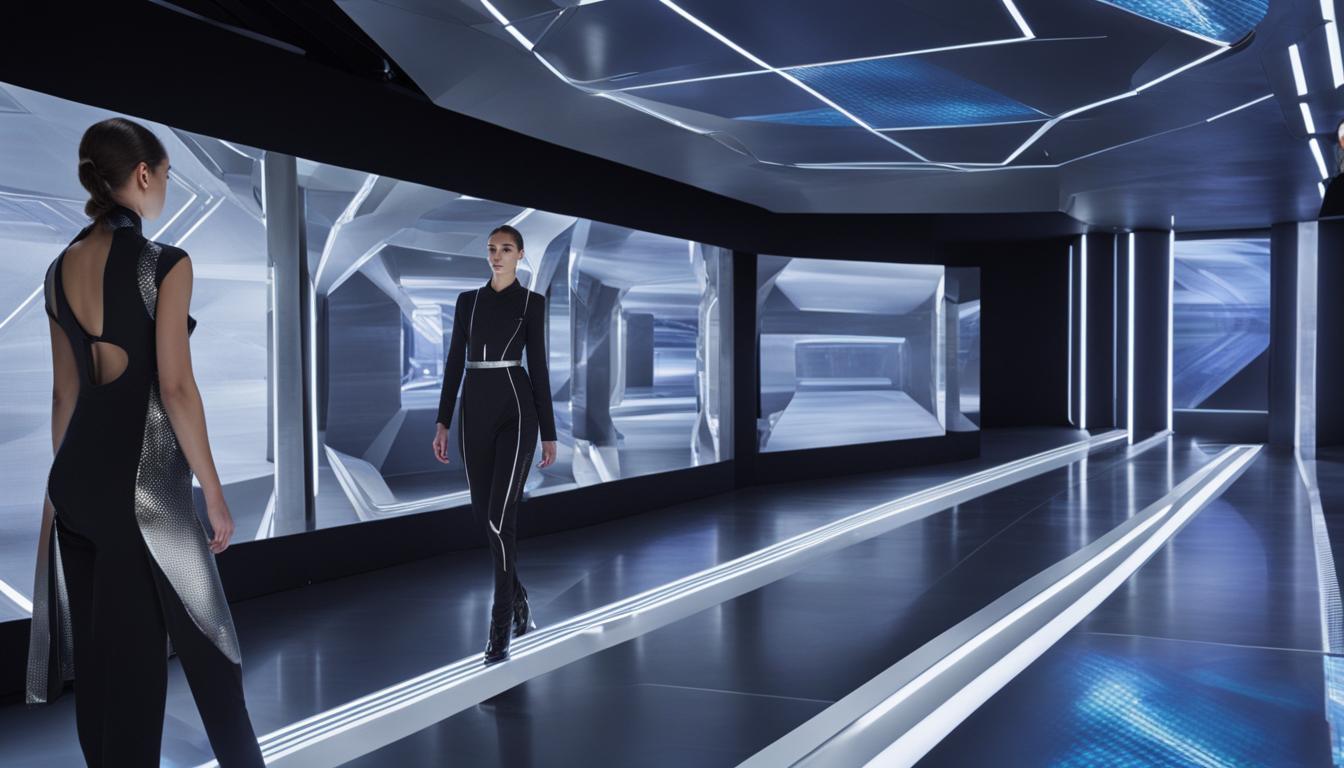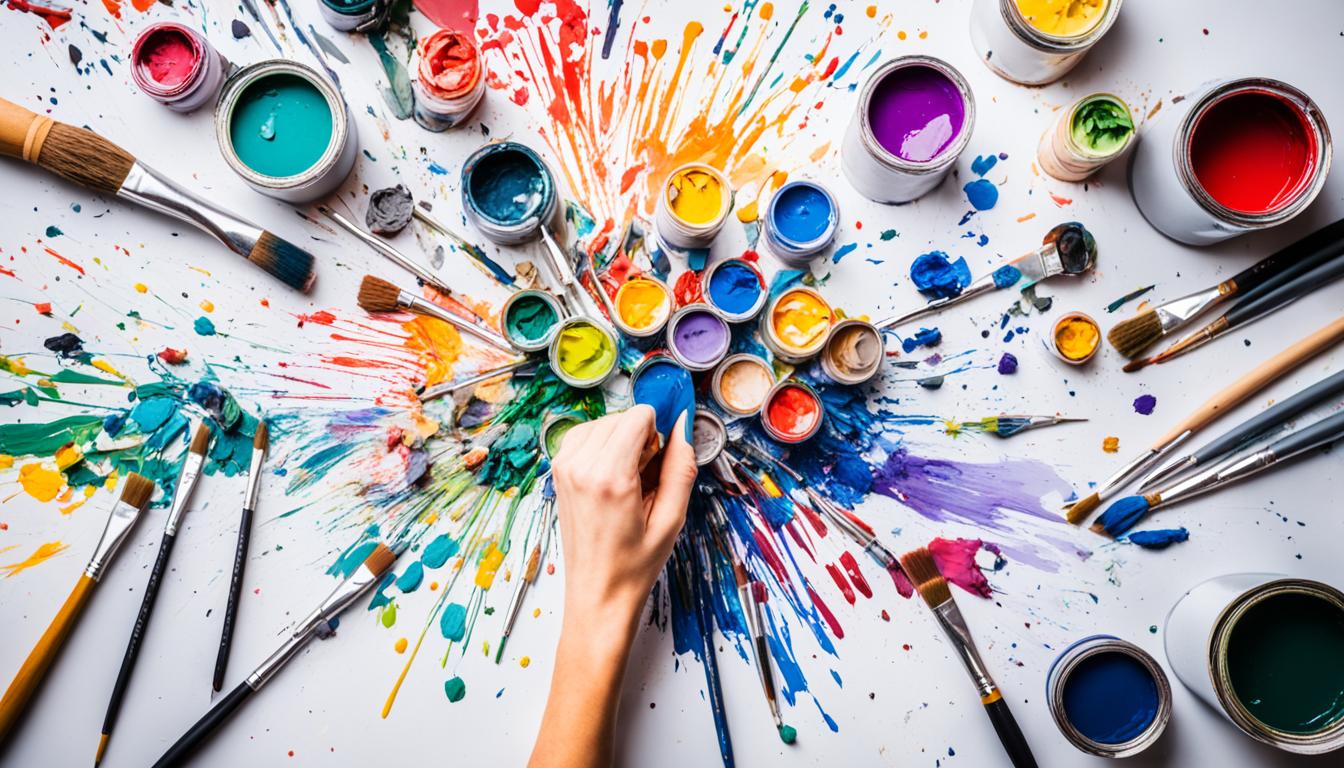In the ever-evolving world of fashion, staying ahead of the latest trends is crucial. This is where fashion forecasting comes into play, empowering brands, retailers, and designers with the ability to predict the future of style. By analyzing cultural, social, and economic factors, fashion trend forecasters unlock valuable insights that shape the industry’s direction and drive innovation.
With their expertise and knowledge of consumer behavior, trend forecasters anticipate what consumers will desire in terms of clothing, accessories, colors, and overall style. This enables businesses to make informed decisions and avoid costly mistakes, ensuring they stay ahead of the curve and maintain a competitive edge in the dynamic fashion landscape.
To excel in the field of fashion trend forecasting, certain skills are essential. From trend analysis to research skills and creativity, professionals in this field must possess a diverse range of capabilities. Additionally, education, gaining experience, developing a portfolio, and networking play vital roles in kickstarting a successful career in fashion trend forecasting.
So, let’s dive deeper into the world of fashion forecasting, explore the skills required, and discover how to become a trend forecaster who shapes the future of style.
Key Takeaways:
- Fashion forecasting predicts future trends by analyzing cultural, social, and economic factors.
- Trend forecasters anticipate consumer desires in clothing, accessories, colors, and style.
- Essential skills for fashion trend forecasting include trend analysis, research, creativity, communication, and industry knowledge.
- To become a trend forecaster, pursue education, gain experience, develop skills, build a portfolio, and network.
- The future of fashion is shaped by sustainability and digitization trends.
Essential Skills for Fashion Trend Forecasting
To excel as a fashion trend forecaster, certain skills are essential. These skills include:
- Trend Analysis: Having a keen eye for detail and the ability to analyze current trends through studying fashion shows, street styles, social media, and cultural movements.
- Research Skills: Being able to gather and analyze data from various sources to identify consumer preferences, cultural shifts, and market trends.
- Creativity: Thinking outside the box and presenting forecasts in a visually appealing and engaging manner.
- Communication Skills: Presenting findings to clients, colleagues, and industry professionals with strong verbal and written communication skills.
- Industry Knowledge: Staying updated on the latest fashion news, following influential designers and brands, and immersing oneself in the world of fashion.

Trend analysis is a foundational skill that allows fashion trend forecasters to identify emerging patterns and predict future trends. By closely examining fashion shows, street styles, social media, and cultural movements, trend analysts can identify key elements such as color palettes, silhouettes, patterns, and materials that are gaining popularity.
Research skills are essential for gathering and analyzing data from various sources to gain insights into consumer preferences, cultural shifts, and market trends. Trend forecasters must be able to interpret data and translate it into actionable forecasts that will resonate with consumers.
Creativity plays a crucial role in fashion trend forecasting as forecasters need to think outside the box and present forecasts in a visually appealing and engaging manner. This involves envisioning innovative concepts, combining different elements in unexpected ways, and creating compelling narratives to captivate audiences.
Communication skills are vital for conveying forecast findings to clients, colleagues, and industry professionals. Trend forecasters must be able to articulate their ideas confidently, both verbally and in written form, to effectively communicate the potential impact of trends and how they can be translated into successful fashion collections.
Having a deep industry knowledge is crucial for fashion trend forecasters as it allows them to stay updated on the latest fashion news, follow influential designers and brands, and immerse themselves in the world of fashion. By being well-versed in the industry landscape, forecasters can accurately predict shifts in consumer preferences and identify emerging trends before they become mainstream.
How to Become a Fashion Trend Forecaster
If you have a keen eye for style and a passion for predicting fashion trends, a career as a fashion trend forecaster might be the perfect fit for you. As a fashion trend forecaster, you will have the exciting opportunity to analyze current industry trends and forecast what will be popular in the future. Here are the key steps to kickstart your journey as a fashion trend forecaster:
Education
One of the first steps towards becoming a fashion trend forecaster is to consider pursuing a degree in fashion merchandising, marketing, or design from reputable institutions. A strong educational foundation will provide you with the necessary knowledge and skills to excel in this field.
Gain Experience
Building industry experience is crucial in the world of fashion trend forecasting. Seek internships or entry-level positions in fashion companies, trend forecasting agencies, or fashion publications. This hands-on experience will not only enhance your understanding of the industry but also help you develop valuable insights into consumer behavior and market trends.
Develop Skills
To excel as a fashion trend forecaster, it is essential to continuously develop your skills. Participate in workshops, webinars, and online courses that focus on trend analysis, research methods, and forecasting techniques. Stay updated on the latest fashion news and immerse yourself in the world of fashion to stay ahead of the curve.
Build a Portfolio
A strong portfolio is essential to showcase your skills and expertise as a fashion trend forecaster. Include examples of your trend analysis, forecasting projects, and any other relevant work. Your portfolio should demonstrate your ability to analyze trends, make accurate predictions, and present your findings effectively.
Network
Networking is key in the fashion industry. Attend industry events, join professional organizations, and connect with fellow fashion professionals on platforms like LinkedIn. Building a strong network will not only help you stay connected with industry trends but also open doors to exciting career opportunities.

“Fashion is not something that exists in dresses only. Fashion is in the sky, in the street; fashion has to do with ideas, the way we live, what is happening.”
– Coco Chanel
| Benefits of Becoming a Fashion Trend Forecaster | Challenges of Becoming a Fashion Trend Forecaster |
|---|---|
|
|
Trends Shaping the Future of Fashion
The future of fashion is being shaped by two major categories: sustainability and digitization. These trends are not opposites but often go hand-in-hand. Sustainable developments are being implemented through digital processes. Some of the key trends shaping the future of fashion include:
- Post-Covid Fashion: A focus on health and well-being, with clothing that promotes physical and mental health.
- Rental Services and Second-hand Fashion: Increasing popularity of alternative consumption models, reducing resource consumption and promoting sustainability.
- Circular Economy: A focus on reducing resource consumption through recycling and regenerative practices.
- Regenerative Fashion: Using eco-agriculture methods to produce climate-positive materials, reducing the carbon footprint.
- Personalization: Customized fashion experiences and offerings to meet individual preferences.
- Digitized Fashion: Embracing digital influencers, virtual fashion, and the metaverse.
- Live Shopping: Making digital shopping an immersive and interactive experience.

Post-Covid Fashion
“The pandemic has reshaped our priorities, and this is reflected in the fashion industry as well. Consumers are now seeking clothing that not only looks stylish but also promotes their physical and mental well-being. This includes embracing comfortable fabrics, athleisure wear, and designs that inspire positivity and confidence.”
Rental Services and Second-hand Fashion
“The rise of sustainable fashion has led to the increased popularity of rental services and second-hand fashion. Consumers are embracing the idea of sharing and reusing clothing, reducing the environmental impact of fast fashion. This trend promotes a more circular economy and encourages conscious consumption.”
Circular Economy
“The fashion industry is rethinking its approach to resource consumption and waste management. By emphasizing a circular economy, fashion brands are finding innovative ways to recycle materials, reduce waste, and extend the lifespan of garments. This sustainable practice helps minimize environmental impact and preserve valuable resources.”
Regenerative Fashion
“Regenerative fashion goes beyond sustainability by actively contributing to a positive environmental impact. It involves using eco-agriculture methods to create materials that are not just sustainable but also climate-positive. By sequestering carbon and supporting biodiversity, regenerative fashion plays a crucial role in combating climate change.”
Personalization
“In the future of fashion, personalization takes center stage. Consumers are looking for unique and tailored experiences, whether through made-to-order garments or customizable fashion platforms. This trend caters to individual preferences and fosters a deep connection between consumers and their clothing.”
Digitized Fashion
“With the advent of digital technology, the fashion industry is embracing new possibilities. From online influencers to virtual fashion experiences and the rise of the metaverse, digitized fashion offers immersive and interactive ways for consumers to engage with brands and explore their personal style in a virtual space.”
Live Shopping
“Live shopping takes e-commerce to the next level by providing real-time, interactive experiences for consumers. Through live video streams, product demonstrations, and interactive chat features, brands are creating a more engaging and personalized shopping experience in the digital realm. Live shopping combines the convenience and accessibility of online shopping with the excitement of in-person retail.”
The Role of Trend Forecasting in the Fashion Industry
Trend forecasting is a vital component of the fashion industry, providing brands, retailers, and designers with valuable insights and guidance. By analyzing consumer habits, social and cultural movements, historical data, and market trends, trend forecasters predict future fashion trends, enabling businesses to make informed decisions and stay competitive.
One key aspect of trend forecasting is its impact on brand strategy. Understanding upcoming trends allows fashion brands to align their brand identity and messaging with the desires and expectations of their target audience. By incorporating emerging styles and preferences into their brand strategy, fashion companies can better connect with consumers and build brand loyalty.
Moreover, trend forecasting heavily influences the product development process. By staying ahead of the curve, designers can create collections that resonate with consumers and meet their evolving needs. This proactive approach to product development helps fashion brands stay relevant, while reducing the risk of investing in designs that may not appeal to their target market.
Additionally, trend forecasting plays a crucial role in shaping marketing campaigns. By anticipating future fashion trends, brands can tailor their marketing efforts to capture the attention of their target audience. Whether it’s through visual storytelling, influencer partnerships, or social media strategies, trend forecasters help fashion brands craft impactful campaigns that resonate with consumers.
In essence, trend forecasting is an exciting and dynamic field that empowers the fashion industry to drive innovation and shape the future of style. By staying attuned to emerging trends and consumer desires, brands, retailers, and designers can position themselves as trendsetters, remain competitive, and meet the ever-changing demands of the fashion industry.




